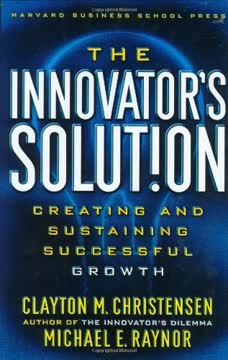Key Takeaways
1. Small changes in communication can dramatically increase persuasiveness
"Small, easy changes to our messages can make them vastly more persuasive."
Subtle tweaks matter. Simple adjustments in how we frame requests or present information can significantly boost their persuasive power. For example:
- Using the word "because" when making a request, even if followed by an obvious reason, increases compliance
- Personalizing messages, such as adding a handwritten note on a sticky note, enhances response rates
- Repeating a customer's order verbatim increases tips for waitstaff
Language choice is crucial. The specific words and phrases we use can make or break our persuasive attempts:
- Framing options as potential losses rather than gains often motivates action more effectively
- Using rhymes can make statements seem more accurate and truthful
- Emphasizing scarcity or exclusivity can increase perceived value and desire
2. Social proof is a powerful influencer of human behavior
"When people are uncertain about a course of action, they tend to look outside themselves and to other people around them to guide what they do."
We follow the crowd. Humans have a natural tendency to look to others for cues on how to behave, especially in ambiguous situations. This principle of social proof can be leveraged ethically to encourage positive behaviors:
- Highlighting that a majority of people engage in a desired behavior (e.g., reusing hotel towels) increases compliance
- Showcasing testimonials from similar individuals or peers enhances the effectiveness of marketing messages
- Demonstrating popularity or high demand for a product or service can boost sales
Beware of negative social proof. Sometimes, emphasizing widespread undesirable behavior can backfire by normalizing it. Instead:
- Focus on positive trends or the actions of the most successful individuals
- Use "dynamic norms" that show how behavior is changing over time
3. Scarcity and loss aversion drive decision-making
"People are more sensitive to possible losses than to possible gains."
Fear of missing out motivates. The principle of scarcity suggests that people value things more when they are rare or dwindling in availability. This can be applied in various contexts:
- Limited-time offers or exclusive deals can drive sales
- Emphasizing unique features or benefits of a product can increase its perceived value
- Framing decisions in terms of what might be lost rather than gained often has a stronger impact
Loss aversion is powerful. People are generally more motivated to avoid losses than to acquire equivalent gains. This psychological tendency can be leveraged ethically:
- Highlight potential losses from inaction rather than just benefits of action
- Frame cost-saving measures in terms of "money lost" rather than "money saved"
- Emphasize the unique opportunities that might be missed by not taking action
4. Reciprocity creates a sense of obligation and influences compliance
"The norm of reciprocity obligates us to repay others for what we have received from them."
Give to receive. The principle of reciprocity suggests that people feel compelled to return favors, gifts, or gestures of goodwill. This can be a powerful tool for building relationships and influencing behavior:
- Offering free samples or valuable information can increase sales and customer loyalty
- Providing unexpected or personalized gestures of goodwill can strengthen business relationships
- Small favors or concessions can lead to larger commitments in return
Timing and personalization matter. The effectiveness of reciprocity can be enhanced by:
- Giving first, without expectation of immediate return
- Making gestures feel unexpected and genuine
- Tailoring the gift or favor to the recipient's interests or needs
5. Consistency with prior commitments shapes future actions
"People have a natural tendency to be consistent with their pre-existing attitudes, statements, values and actions."
Leverage past behavior. Once people make a commitment, they are more likely to follow through on related actions to maintain consistency. This principle can be applied in various ways:
- Ask for small commitments before larger ones (foot-in-the-door technique)
- Remind people of their past actions or stated values when making requests
- Encourage public or written commitments to increase follow-through
Start small and build. The power of consistency can be harnessed gradually:
- Begin with simple, easy-to-agree-with statements or actions
- Progressively increase the level of commitment over time
- Use past compliance as a foundation for future requests
6. Personalization and similarity enhance persuasion effectiveness
"We're most likely to follow the behavior of others with whom we share personal characteristics, such as values, beliefs, age and gender."
Like attracts like. People are more easily influenced by those they perceive as similar to themselves. This principle can be applied in various persuasion contexts:
- Tailor messages to highlight shared characteristics or experiences
- Use testimonials or case studies featuring individuals similar to the target audience
- Emphasize common goals, values, or challenges
Personalization boosts impact. Customizing communication and offers to individual preferences and needs increases their effectiveness:
- Use people's names and reference personal details when appropriate
- Segment audiences and tailor messages to specific groups
- Provide personalized recommendations based on past behavior or stated preferences
7. Timing and context significantly impact persuasion outcomes
"What you experience first determines the perception of the next thing you experience."
Timing is crucial. The effectiveness of persuasion attempts can vary greatly depending on when and how they are delivered:
- Consider the recipient's emotional state and level of fatigue
- Use contrast effects by presenting less favorable options first
- Take advantage of natural decision-making points or transitions
Context shapes perception. The environment and circumstances surrounding a persuasion attempt can greatly influence its success:
- Use physical cues (e.g., background images) to prime desired associations
- Consider the broader context of the interaction (e.g., cultural norms, current events)
- Frame requests in relation to relevant reference points or anchors
8. Ethical influence builds long-term trust and relationships
"When these tools are instead used unethically as weapons, however – for example, by dishonestly or artificially importing the principles of social influence into situations in which they don't naturally exist – the short-term gains will almost invariably be followed by long-term losses."
Honesty pays off. While unethical persuasion tactics might yield short-term gains, they ultimately damage relationships and reputations. Ethical influence focuses on:
- Providing accurate information and genuine value
- Respecting the autonomy and well-being of the person being influenced
- Building long-term trust and mutually beneficial relationships
Transparency builds trust. Being open about persuasion attempts can paradoxically make them more effective:
- Acknowledge potential biases or conflicts of interest
- Provide balanced information, including potential drawbacks
- Allow people to make informed decisions without undue pressure
9. Cultural differences affect persuasion strategies across global contexts
"Although the fundamental principles of social influence and many of the strategies we discuss throughout this book are powerful persuaders in all cultures, recent research suggests that there are some subtle differences in how you should tailor your tactics and your messages to the cultural background of the person you're trying to persuade."
One size doesn't fit all. Persuasion strategies that work well in one cultural context may be less effective or even counterproductive in another. Key cultural dimensions to consider include:
- Individualism vs. collectivism
- Power distance
- Uncertainty avoidance
- Long-term vs. short-term orientation
Adapt your approach. To be effective across cultures:
- Research and respect local customs, values, and communication styles
- Consider how cultural factors might influence the interpretation of your message
- Be prepared to adjust your persuasion tactics based on cultural context
Human behavior, while complex, follows predictable patterns. Understanding and ethically applying the principles of persuasion can significantly enhance our ability to influence others and create positive outcomes. By focusing on building genuine relationships, providing value, and respecting cultural differences, we can become more effective communicators and leaders in an increasingly interconnected world.
</human_response>
Last updated:
FAQ
What's "Yes!: 50 Secrets from the Science of Persuasion" about?
- Overview: "Yes!: 50 Secrets from the Science of Persuasion" by Noah J. Goldstein, Steve J. Martin, and Robert B. Cialdini explores scientifically-backed strategies to enhance persuasion skills.
- Content Structure: The book is divided into 50 chapters, each revealing a unique persuasion technique supported by research and real-world examples.
- Purpose: It aims to provide readers with practical tools to influence others ethically and effectively in various contexts, from business to personal interactions.
- Authors' Expertise: The authors are renowned experts in psychology and marketing, bringing credibility and depth to the insights shared.
Why should I read "Yes!: 50 Secrets from the Science of Persuasion"?
- Practical Application: The book offers actionable strategies that can be applied in everyday situations to improve communication and influence.
- Scientific Foundation: Each technique is grounded in rigorous psychological research, ensuring reliability and effectiveness.
- Broad Relevance: Whether you're a business professional, educator, or simply looking to improve personal relationships, the book provides valuable insights.
- Ethical Persuasion: It emphasizes ethical influence, helping readers achieve positive outcomes without manipulation.
What are the key takeaways of "Yes!: 50 Secrets from the Science of Persuasion"?
- Small Changes, Big Impact: Minor adjustments in communication can significantly enhance persuasiveness.
- Social Proof: People are influenced by the actions of others, making social proof a powerful tool in persuasion.
- Reciprocity Principle: Offering something first can create a sense of obligation in others to reciprocate.
- Consistency and Commitment: People prefer to act consistently with their commitments and values, which can be leveraged to gain compliance.
How does "Yes!: 50 Secrets from the Science of Persuasion" define the principle of social proof?
- Definition: Social proof is the psychological phenomenon where people mimic the actions of others in an attempt to reflect correct behavior.
- Application: The book illustrates how highlighting the popularity of a behavior or product can increase its adoption.
- Research Example: Studies show that informing hotel guests that most others reuse towels significantly increases towel reuse rates.
- Practical Tip: Use testimonials and case studies to demonstrate widespread approval and encourage similar behavior.
What is the "foot-in-the-door" technique discussed in "Yes!: 50 Secrets from the Science of Persuasion"?
- Technique Explanation: The "foot-in-the-door" technique involves making a small request first to increase the likelihood of agreement to a larger request later.
- Psychological Basis: Agreeing to a small request creates a sense of commitment, making individuals more likely to comply with subsequent larger requests.
- Research Insight: The book cites studies where initial small commitments led to significantly higher compliance with larger requests.
- Practical Use: This technique can be applied in sales, negotiations, and even personal requests to gradually build agreement.
How does "Yes!: 50 Secrets from the Science of Persuasion" suggest using scarcity to influence others?
- Scarcity Principle: People value things more when they perceive them as scarce or limited in availability.
- Psychological Impact: Scarcity creates a sense of urgency and exclusivity, prompting quicker decision-making.
- Real-World Example: The book discusses how limited-time offers and exclusive deals can drive consumer behavior.
- Ethical Consideration: While effective, the book advises using scarcity ethically to avoid manipulation and maintain trust.
What are some of the best quotes from "Yes!: 50 Secrets from the Science of Persuasion" and what do they mean?
- "Small changes can make a big difference." This highlights the book's core message that minor adjustments in approach can significantly enhance persuasion.
- "People follow the lead of similar others." Emphasizes the power of social proof and the influence of peer behavior on decision-making.
- "Reciprocity is the social glue that binds us." Underlines the importance of giving first to create a sense of obligation and cooperation.
- "Consistency is the hobgoblin of little minds." Suggests that while consistency is powerful, it should not lead to inflexibility or closed-mindedness.
How does "Yes!: 50 Secrets from the Science of Persuasion" address the use of authority in persuasion?
- Authority Principle: People tend to follow the lead of credible, knowledgeable experts.
- Application: The book advises leveraging authority by highlighting credentials and expertise to enhance persuasiveness.
- Research Support: Studies show that perceived authority can significantly increase compliance and trust.
- Practical Tip: Use endorsements, certifications, and expert opinions to establish authority and influence decisions.
What is the "labeling technique" in "Yes!: 50 Secrets from the Science of Persuasion"?
- Technique Overview: The labeling technique involves assigning a positive label to someone to encourage behavior consistent with that label.
- Psychological Mechanism: People strive to act in ways that align with how they are labeled, reinforcing the desired behavior.
- Research Example: The book cites studies where labeling individuals as "above-average citizens" increased their likelihood of voting.
- Practical Application: Use positive labels in feedback and encouragement to motivate desired actions in others.
How does "Yes!: 50 Secrets from the Science of Persuasion" suggest handling objections in persuasion?
- Acknowledge and Reframe: The book advises acknowledging objections and reframing them to highlight positive aspects.
- Two-Sided Messages: Presenting both pros and cons can increase credibility and trustworthiness.
- Research Insight: Studies show that addressing weaknesses upfront can make strengths more persuasive.
- Practical Use: Use this approach in negotiations and presentations to build trust and address concerns effectively.
What role does emotion play in persuasion according to "Yes!: 50 Secrets from the Science of Persuasion"?
- Emotional Influence: Emotions can significantly impact decision-making and receptiveness to persuasion.
- Research Findings: The book discusses studies showing how emotional states can alter perceptions and responses.
- Practical Tip: Tailor messages to resonate emotionally with the audience for greater impact.
- Caution: Be mindful of the ethical implications of using emotions in persuasion to avoid manipulation.
How can "Yes!: 50 Secrets from the Science of Persuasion" help improve negotiation skills?
- Preparation and Strategy: The book provides strategies for setting the stage for successful negotiations, such as building rapport and using social proof.
- Consistency and Commitment: Leveraging past commitments can strengthen negotiation positions and encourage agreement.
- Authority and Expertise: Highlighting expertise can enhance credibility and influence in negotiations.
- Practical Examples: The book offers real-world scenarios and research-backed techniques to apply in various negotiation contexts.
Review Summary
Yes!: 50 Scientifically Proven Ways to Be Persuasive received mixed reviews. Many readers found it informative and practical, praising its concise format and real-world applications. Some appreciated the scientific basis of the persuasion techniques presented. However, critics felt it lacked depth and originality, especially compared to Cialdini's previous work. Some found the writing style dull or repetitive. Overall, readers valued the book for its insights into human behavior and persuasion tactics, though opinions varied on its effectiveness as a standalone resource.
Similar Books







Download PDF
Download EPUB
.epub digital book format is ideal for reading ebooks on phones, tablets, and e-readers.




